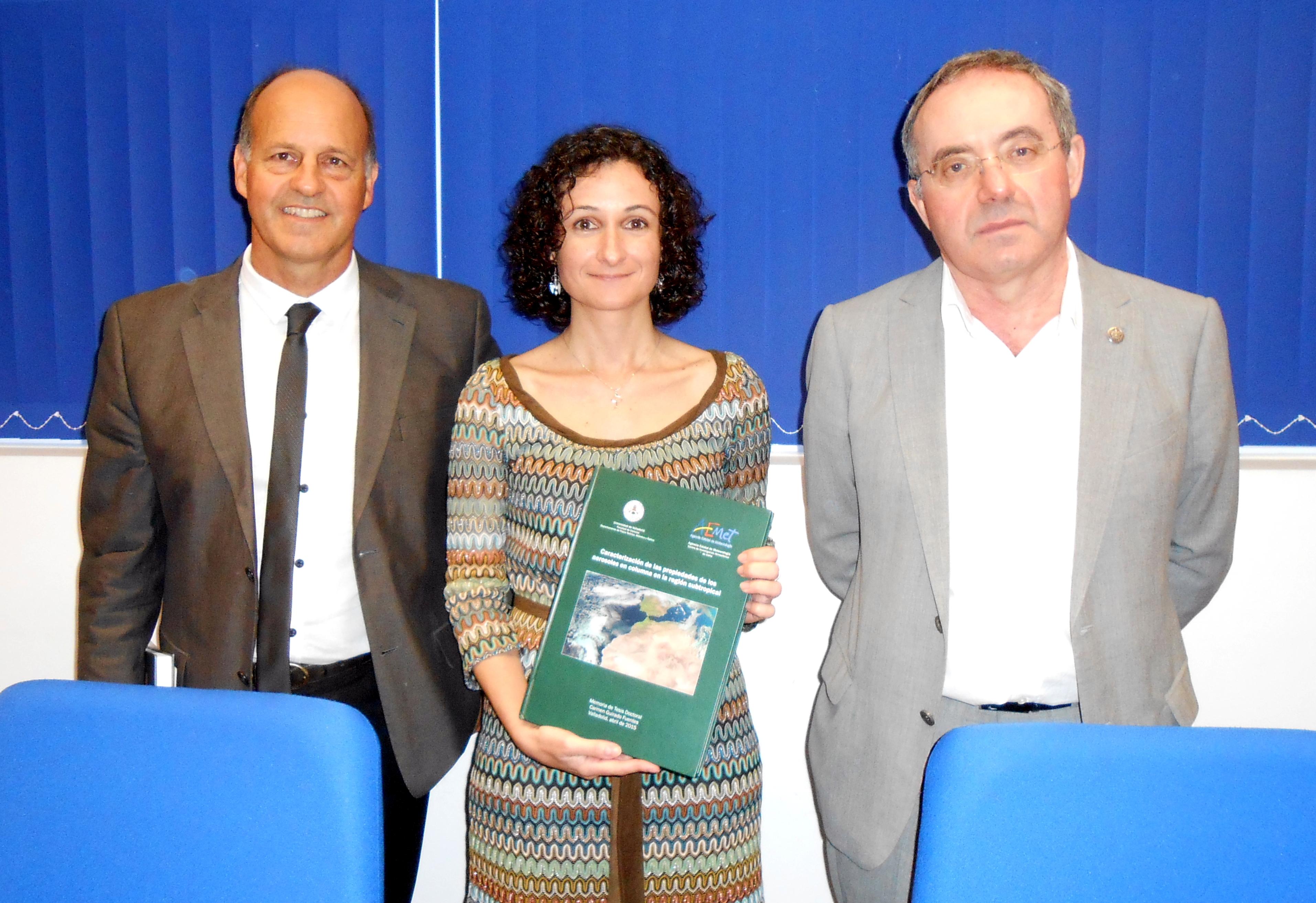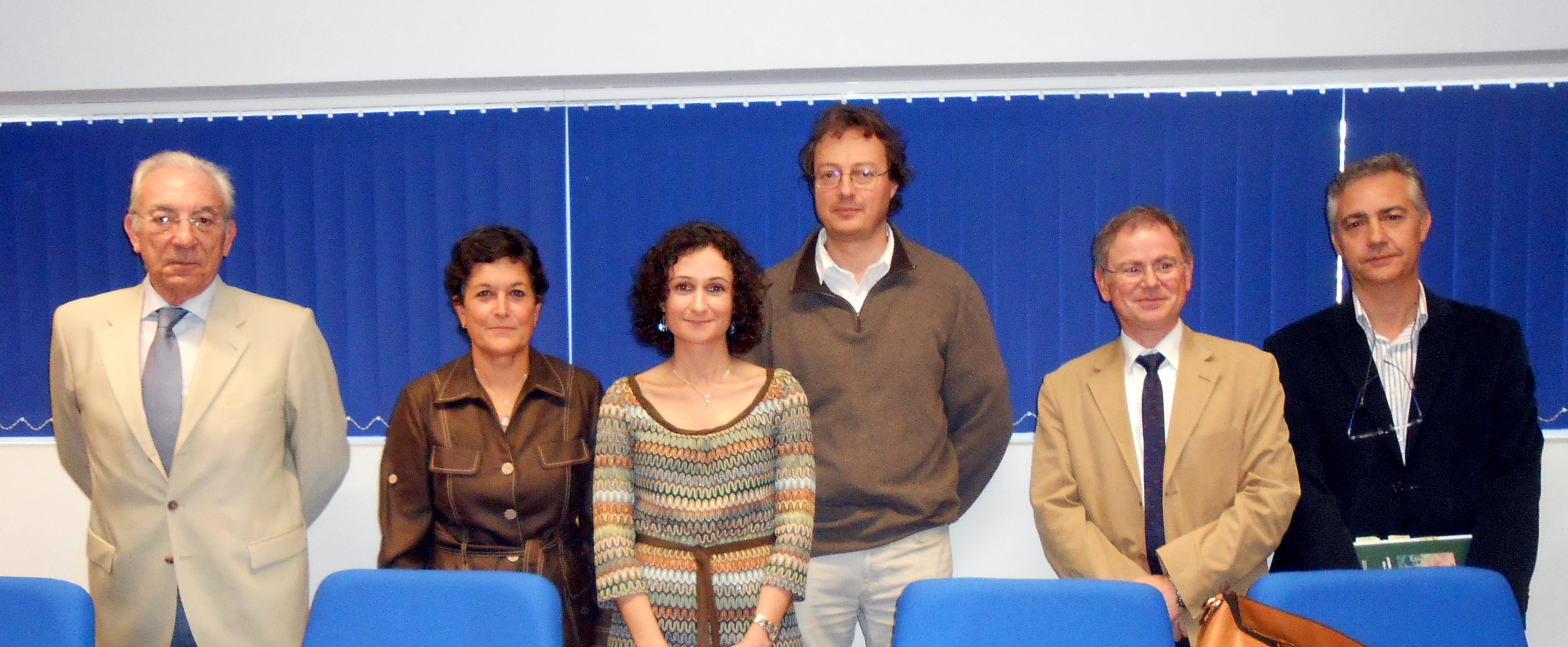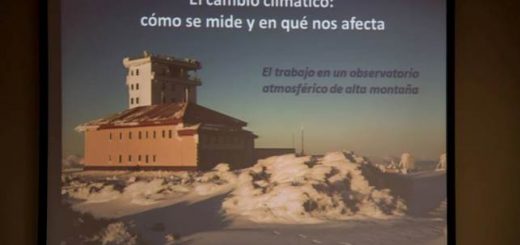PhD Defence of Carmen Guirado Fuentes: “Characterization of the total column aerosol properties in the subtropical region”

On 19 June 2015, Carmen Guirado Fuentes defended her PhD Thesis entitled “Characterization of the total column aerosol properties in the subtropical region” at University of Valladolid. The thesis was supervised by Dr. Emilio Cuevas Agulló, Director of the Izaña Atmospheric Research Center (IARC, State Meteorological Agency-AEMET) and Dr. Ángel de Frutos Baraja, Director of the Department of Theoretical and Atomic Physics and Optics at the University of Valladolid (UVA). This Doctoral Thesis work has been developed at IARC and it has been possible thanks to the collaboration agreement between IARC and Optics Atmospheric Group (University of Valladolid) for the development of jointly supervised thesis. This thesis was carried out as part of the PhD program in Advanced Methods for Modern Physics.

Dr. Carmen Guirado Fuentes (UVA/AEMET) with her supervisors Dr. Emilio Cuevas (AEMET), on the left, and Dr. Ángel de Frutos Baraja (UVA), on the right.
Dr. Carmen Guirado-Fuentes was honoured with the top rating Summa Cum Laude by the panel of expert examiners composed by Dr. Santiago Mar Sardaña (UVA), Dr. Victoria Cachorro Revilla (UVA), Dr. Philippe Goloub (University of Lille), Dr. Pablo Ortiz de Galisteo Marín (AEMET), and Dr. Manuel Pujadas Cordero (Research Centre for Energy, Environment and Technology-CIEMAT).

From left to right: Dr. Santiago Mar (UVA), Dr. Victoria Cachorro (UVA), Dr. Carmen Guirado Fuentes (UVA/AEMET), Dr. Philippe Goloub (University of Lille), Dr. Pablo Ortiz de Galisteo (AEMET), and Dr. Manuel Pujadas (CIEMAT).

Carmen Guirado Fuentes with the presents from her colleagues from GOA. From left to right: Carlos Toledano, Roberto Román, Victoria Cachorro, David Mateos, Mª Ángeles Burgos, Cristian Velasco, Ángel de Frutos, David Fuertes, and Ramiro González.
This Doctoral Thesis work, which could be downloaded here (in Spanish), focuses on the characterization of atmospheric aerosols over a large area in the subtropical region of the Northern Hemisphere covering the Sahara Desert and the eastern North Atlantic region. The approach used in the analysis of atmospheric aerosol optical properties is the solar photometry technique which provides aerosol content and properties in the atmospheric column.
The subtropical belt of the Northern Hemisphere is mainly covered by desert and oceanic regions, so ground-based aerosol measurements are very scarce. Natural aerosols, mostly composed by sea-salt aerosols and mineral dust, are the main constituents, although some mixing with anthropogenic aerosols also exists. The Sahara desert is one of the most important mineral dust sources in the world, which is the subject of growing interest among the international aerosols research community.
This study providing aerosol characterization in the wide subtropical region firstly includes the development and deployment of an optical calibration facility at the Izaña Atmospheric Research Center (IARC; State Meteorological Agency of Spain). This facility is essential for IARC as a fully AERONET (AErosol RObotic NETwork) sun photometer calibration facility. Secondly, an accurate analysis of relatively long data series of aerosol optical properties was performed in the Saharan continental boundary layer, the marine boundary layer, and the clean free troposphere, using data from AERONET and ancillary information.
Data from Tamanrasset (Algeria) were used as a strategic AERONET station in the heart of the Sahara desert, which plays a key role in dust model and satellite borne sensor evaluation. The deployment and operation of this station is the result of a joint effort of IARC, the Atmospheric Optics Group (University of Valladolid), and the Laboratoire d’ Optique Atmosphérique (University of Lille). Furthermore, IARC is involved in relevant international aerosol research programmes conducted in Tenerife (Canary Islands, Spain). Therefore, data from two AERONET stations in the island, Santa Cruz de Tenerife and Izaña, were selected to perform a detailed and accurate analysis and characterization of aerosols in marine boundary layer and free troposphere background conditions over the North Atlantic Ocean, and to assess the impact of dust-laden Saharan Air Layer outbreaks over the North Atlantic.







